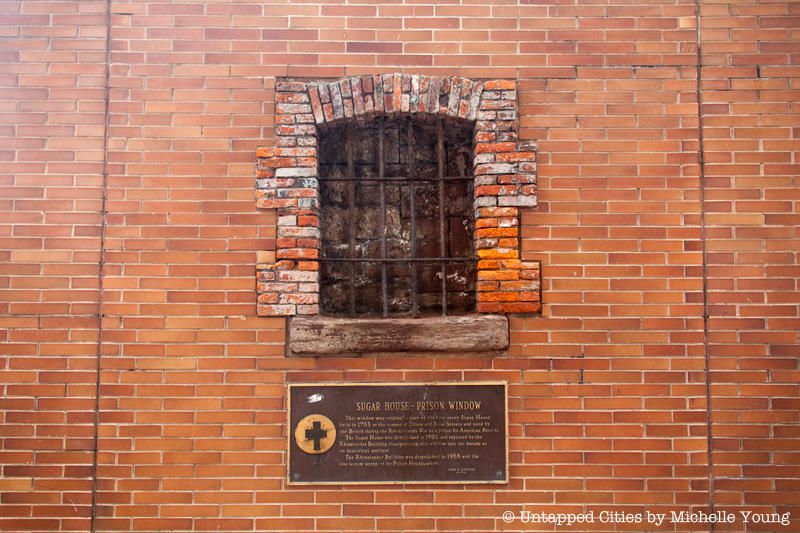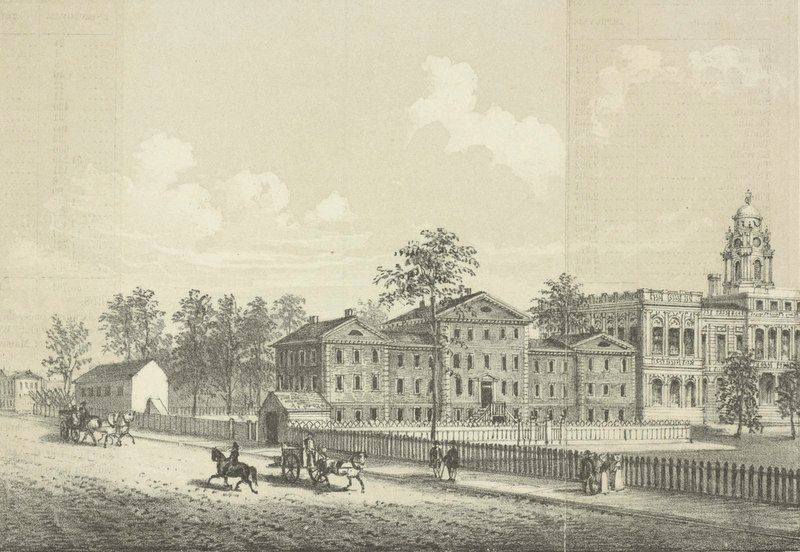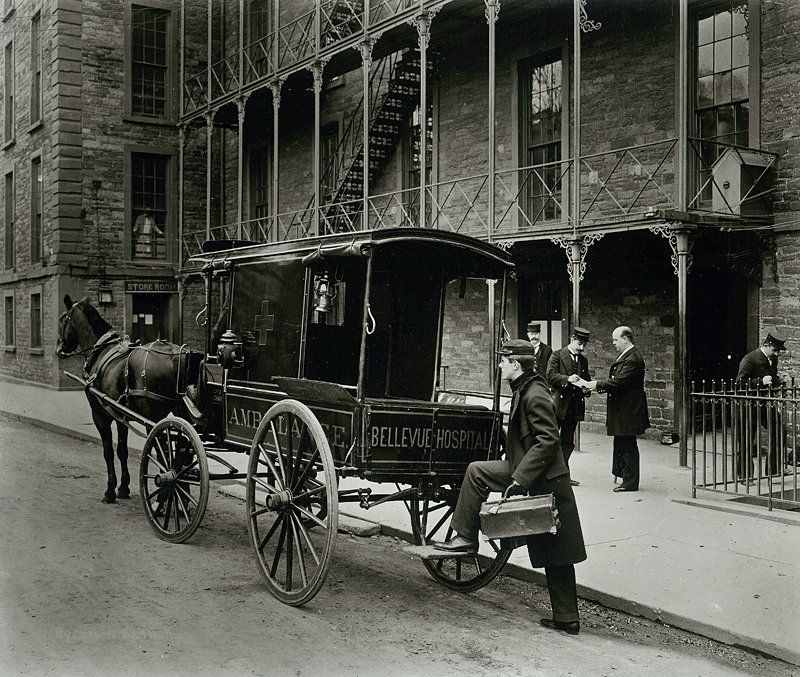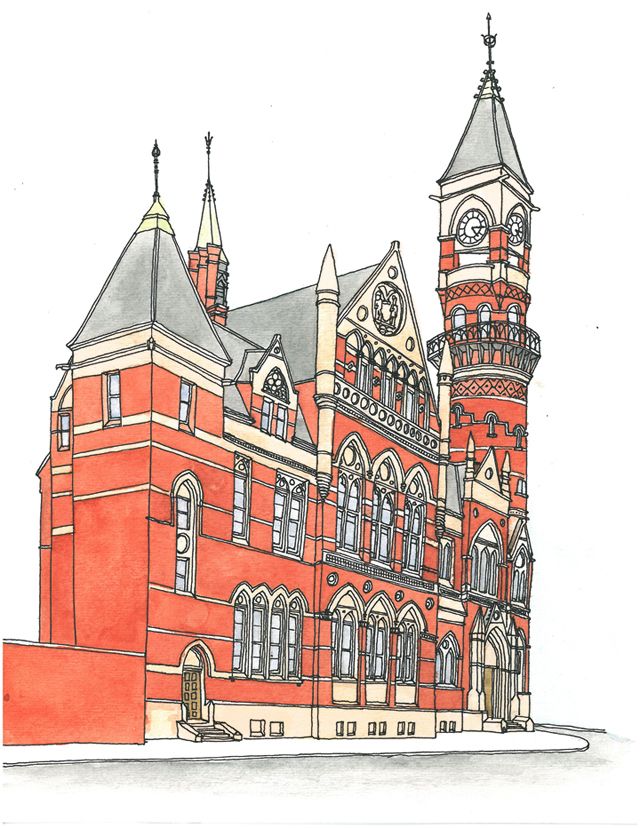How to Make a Subway Map with John Tauranac
Hear from an author and map designer who has been creating maps of the NYC subway, officially and unofficially, for over forty years!



New York City’s prison population is the lowest it has been in 10 years–10,923 inmates as of September 2014. But still, an ongoing question for the NYC Department of Corrections is where to house the inmates in a city as dense as New York. It might be surprising to some that the city’s prisons are generally, right among us–some look just like the apartment buildings next door except for some barbed wire windows. Prisons used to be organized along district lines, particularly before the 1898 consolidation of the five boroughs. They were attached to or near the courts and were little more than holding cells.
Here below are 15 of NYC’s former prisons, many which are still standing:

From the Commissioners Grid for NYC located at Library of Congress.
Between Christopher Street and Charles Street there was once a prison complex called Newgate Prison, the first prison complex in New York State. Newgate was not its official name, but it was referred to colloquially after the prison of the same name in London. In contrast to its predecessor, Newgate was influenced by the ideals of social reformers, who turned it into a house of corrections. It stood there from 1796 to 1829, when the city sold the land and relocated the prison to Sing Sing. The street grid has since been extended and the shoreline further filled in. Originally, the penitentiary had its own wharf.

Image from New York Public Library
Before Newgate, The Bridewell at City Hall was a combination workhouse, jail and prison. In 1797, the first 70 convicts with terms greater than 3 years were transferred from Bridewell to Newgate. There are artifacts unearthed from the almshouse and barracks at City Hall at the Archaeological Repository, seen here.

During the Revolutionary War, sugar houses were often turned into prisons by the British, with deplorable conditions. On Duane Street, embedded into the wall of the NYPD Headquarters is (supposedly) a prison window dating back to 1763. The window is said to be a vestige of the haunted Rhinelander (originally Cuyler) Sugar House prison used during the British occupation of New York from 1776 to 1783.
Though there is evidence to suggest that this location may not have been used as a prison, the memorial stands testament to the prisoner brutality suffered by American revolutionaries at the hands of the British during the war. More than twice the number of deaths occurred in sugar houses and prison ships than on the battlefield during the American Revolution. The more infamous Livingston’s sugar house on Liberty Street housed up to 500 prisoners, according to this harrowing first-person account by Levi Howard, printed in The New York Times in 1852.

Bellevue in 1895. Photo in public domain from Wikimedia Commons. Originally from New York Times, now in Museum of the the City of New York collection.
Bellevue began as an almshouse and was noted on the 1807 Commissioner’s Grid, with construction beginning on the buildings in 1811. In 1814, plans were expanded to include a prison with a manufacturing component. The Bellevue prison had “the only known treadmill in the state for grinding grain,” with women supposedly having higher performance on the treadmill than the men. Read more about the history of Bellevue Hospital, where the first ebola patient in NYC was treated. Bellevue continues to have a city prison, housing males requiring psychiatric or medical treatment.

Photo from New York Public Library
The prison on Blackwell Island (now Roosevelt Island) continued the trend of putting undesirable populations away from civilization, but with the added advantage of being on an island, away from the onward march of development on Manhattan. Unlike earlier prisons in New York City, the prison on Blackwell Island was a truly fortified structure. The cornerstone was laid in 1828 and the main building completed in 1832. It was 600 feet long and 4 stories high. The inmates worked in the Blackwell Island quarries and performed construction work on Hart Island, Randall’s Island and Ward’s Island.
The jail at Ludlow Street Prison, opened in 1862, was a New York Federal Prison located at Ludlow Street and Broome Street. It has had several notable detainees, including Boss Tweed (who died there) and Victoria Woodhull, the first female candidate for the United States Presidency. It was known as a prison for civil crimes rather than criminal ones, and the incarcerated could pay more for better accommodations. According to Ephemeral NY, the prison included “a reading room, grocery store, and cells with comfy beds and curtains. It looks more like a posh university club.” Today, the prison site is home to the Seward Park High School.

The Bayview Correctional Facility at 550 W. 20th St was a medium security women’s state prison across from Chelsea Piers and next to a luxury condo by architect Jean Nouvel. Damaged since Hurricane Sandy, this facility is going to be sold.

Illustration by Bernadette Moke, the Downtown Doodler
Fredrick Clarke Withers, who helped Vaux and Olmstead design Central Park, was the architect behind the Jefferson Market Courthouse, which included a five-story prison. The entrance to the prison was on Tenth Street. Floor one had a guard room, a keeper room as well as two waiting rooms, one for male prisoners and one for female prisoners. Individual cells were provided on the second floor for 29 female prisoners and on the third floor for 58 male prisoners. A steam elevator moved the prisoners around the building and even up to an airing court on the roof for exercise without the change of escape. Though the prison has since been demolished, the courthouse still stands. This building is now known as the Jefferson Market Library.

Image via Google Maps
Former State Prison, formerly a drug rehabilitation center, featured in the film Tenderness with Russell Crowe and Laura Dern. Closed in 2011 as part of Governor Cuomo’s prison closing program, the land sold to Broadway Stages, a film studio company with soundstages already in Greenpoint.
Built in 1856, the Essex Market Prison was located on 2nd Avenue between 1st and 2nd Street. It was notable for its large cat population, including the famous Minnie the cat. The Ludlow Street Jail was just nearby, and these two prisons were sited on what is now the Seward Park High School. The Essex Market Prison was abandoned in 1911.
The Yorkville Prison was a district prison,also known as the 57th Street Jail. In the courthouse basement between 3rd Avenue and Lexington Avenue, 40 detainees could be held.
According to Correction History, the West Side Prison, also a district prison, had “38 cells and a large holding ‘cage.’ Male inmates stayed overnight, some remaining months and years. Women inmates didn’t remain overnight. The fortress-like structure featured back-to-back cells, each a small stone cavern with no shelving and hardly enough space for a single inmate. But its 38 cells sometimes held 157. The night court on 54th Street was just in back of the prison.”
The Fordham Prison was another district prison, built in 1875. Also known as Morrisania, it was replaced by another building at 161st Street and 3rd Avenue in 1924 that contained 6 pens for men and 3 for women.

The Harlem Prison was part of the now landmarked Harlem Courthouse, the oldest jail structure still standing in New York City. The 40 jail cells were used util1940.
West Farms was the 8th District prison, originally at Williamsbridge but later moved to 181st Street in the Bronx.
The exactly location of the Washington Heights Prison is debatable. According to Corrections History, “various reports listed it at 457 W.151st St. Some reports also listed it as 1130 St. Nicholas Avenue.”
This article also partly written by Bernadette Moke.
Subscribe to our newsletter